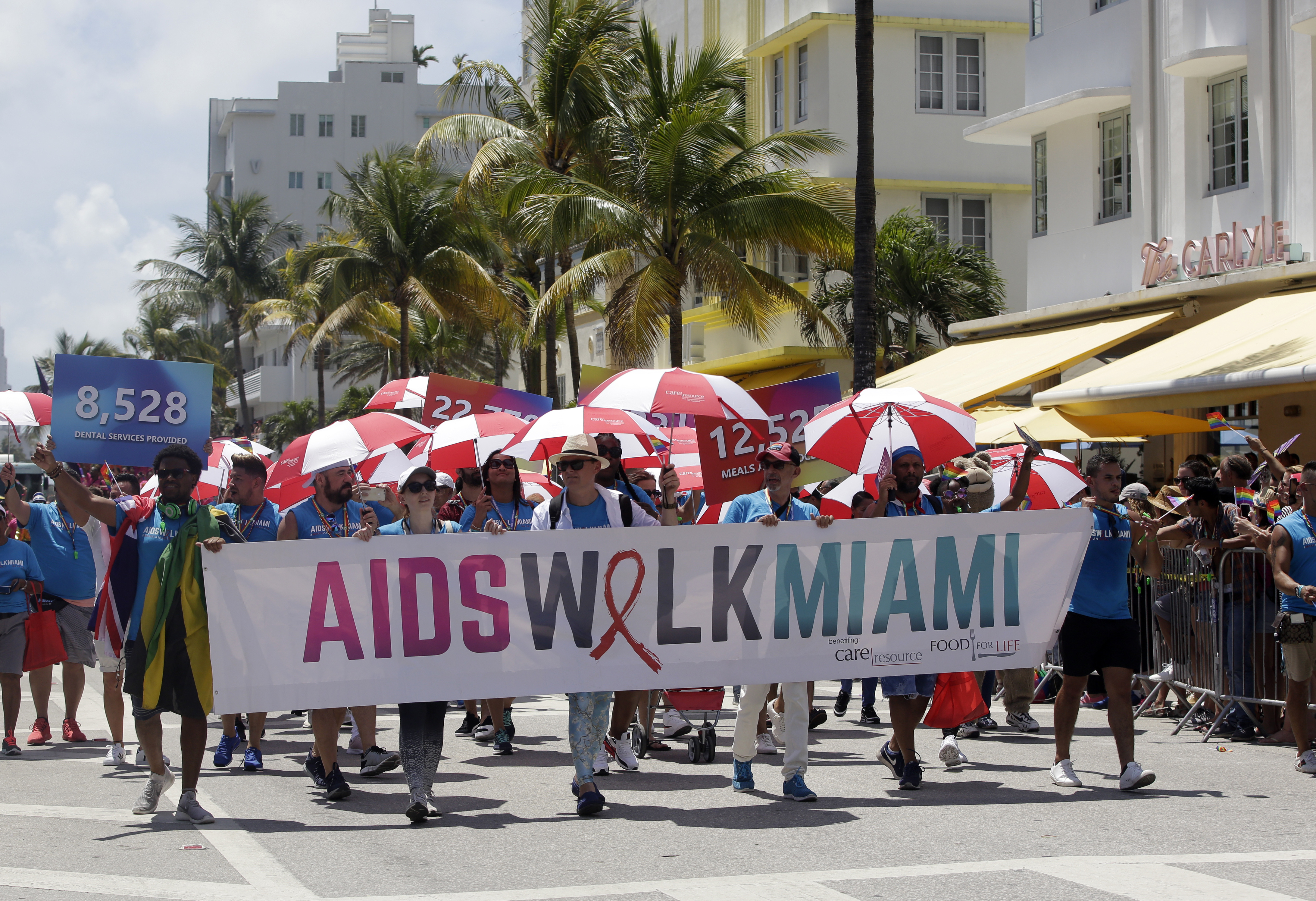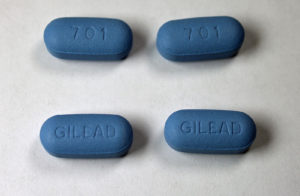Over a Million Americans Have HIV, CDC Reports
In 2017, almost 16,000 people died from complications of the virus. Walkers take part in a fundraiser to help those living with AIDS in Miami. (Lynne Sladky / AP)
Walkers take part in a fundraiser to help those living with AIDS in Miami. (Lynne Sladky / AP)
HIV/AIDS is on the rise in America again in 2019.
According to a report from the Centers for Disease Control and Prevention, almost 1.1 million Americans ages 13 and over have HIV, the virus that causes AIDS.
A decade ago, the spread of HIV/AIDS was declining in America and internationally. In 2009, the World Health Organization reported that cases had declined 17% over the previous eight years.
Now, according to a May article in the New England Journal of Medicine (NEJM): “The United States has been unable to reduce the number of new HIV infections below a startling 38,000 to 40,000 per year.”
Advances in the development of antiretroviral drugs, the NEJM reports, “has transformed HIV infection from a ‘death sentence’ to a chronic and manageable condition”—at least for people with access to those drugs. The authors also point to successful prevention methods, including needle exchanges for intravenous drug users, and pre-exposure prophylaxis (PrEP), a method where people at high risk for HIV take two antiretroviral drugs daily to lower their risk.
Progress slowed in 2013. Since then, according to the CDC, approximately 39,000 per year have been infected. As the NEJM explains,
HIV affects the most vulnerable among us. More than two thirds of new infections occur among people who are economically disenfranchised or ethnic, racial, or sexual minorities. In 2017, of new infections reported in U.S. men, 56% were in black and Latino men who have sex with men, a group that represents less than 1% of the U.S. population. HIV prevalence is much higher among transgender women than among the general population, and women of color bear most of the burden of HIV among U.S. women.
Making the situation worse, the article continues, is a lack of access to treatment. For example, “less than 20% of Americans who could benefit from PrEP have received it.”
In his Feb. 5 State of the Union address to Congress, President Trump called for an end to the AIDS epidemic in America. He announced two goals to do so: 1) to get every American with the disease onto three antiretroviral drugs and 2) to get those at a high risk for AIDS on PrEP.
The CDC agrees that these approaches are effective. Linda Searing of The Washington Post explains that “people who start [antiretroviral] treatment early and take it regularly as prescribed can reduce, and possibly eliminate, their chances of transmitting HIV to others and generally can live long, healthy lives.”
Two problems: Will Trump’s promise move beyond this one speech, and will recent treatments, which can cost up to $39,000 per year, according to Kaiser Health News, benefit anyone who doesn’t currently have access to them?
As The New York Times reported in March, “reaching those goals will take a huge amount of money — far more than the $291 million Mr. Trump requested in his 2020 budget proposal. Moreover, it will require courageous political leadership, not just from the White House, but from every statehouse and city hall in the nation.”
Meanwhile, In 2017, almost 16,000 people died from AIDS. Read the full CDC report here.
Your support matters…Independent journalism is under threat and overshadowed by heavily funded mainstream media.
You can help level the playing field. Become a member.
Your tax-deductible contribution keeps us digging beneath the headlines to give you thought-provoking, investigative reporting and analysis that unearths what's really happening- without compromise.
Give today to support our courageous, independent journalists.





You need to be a supporter to comment.
There are currently no responses to this article.
Be the first to respond.